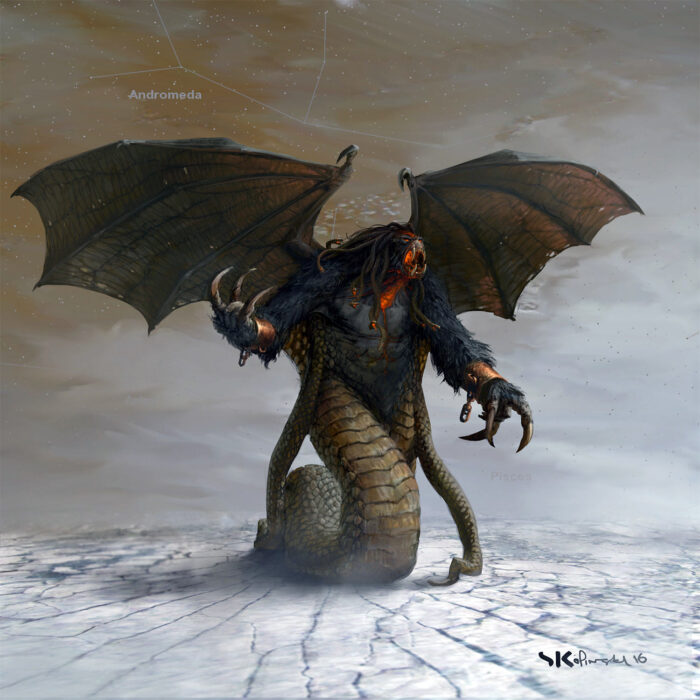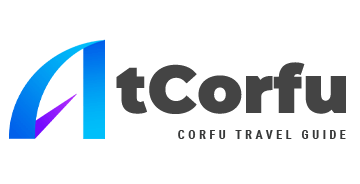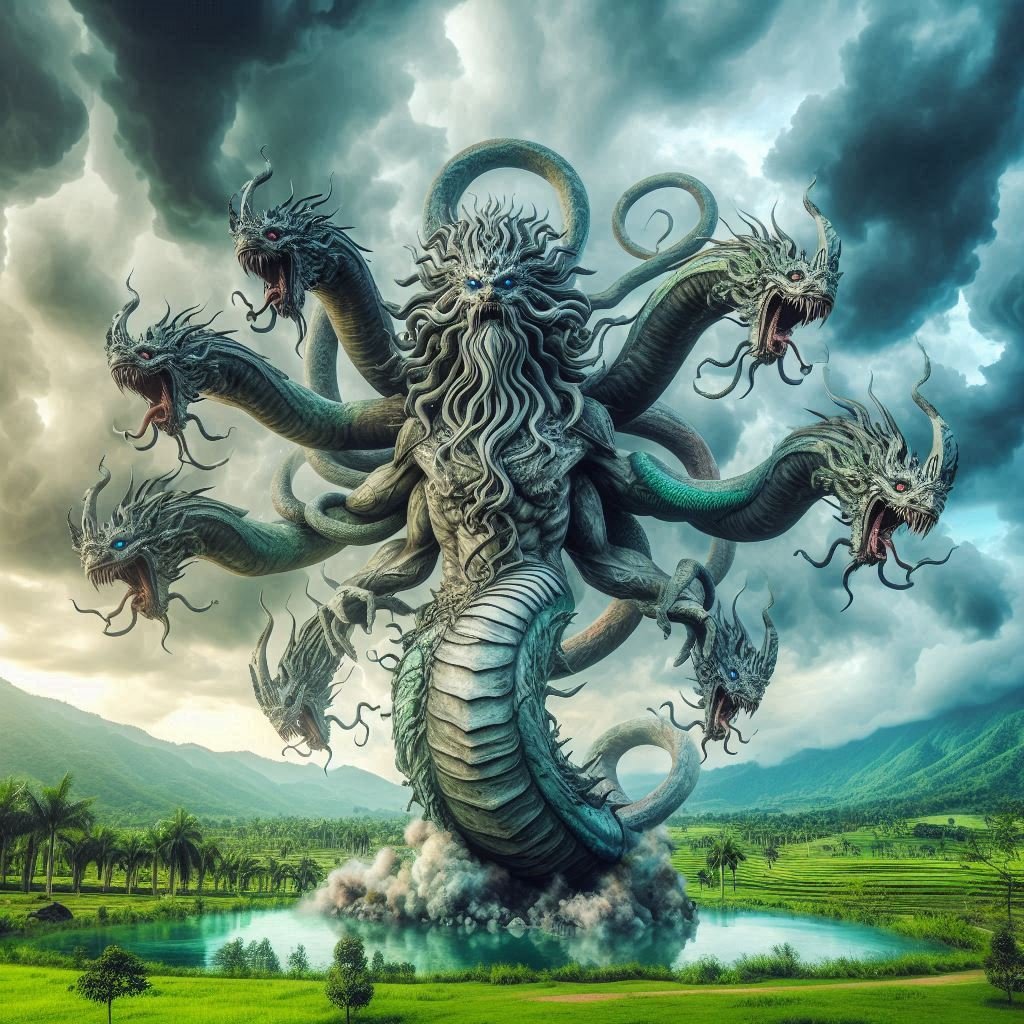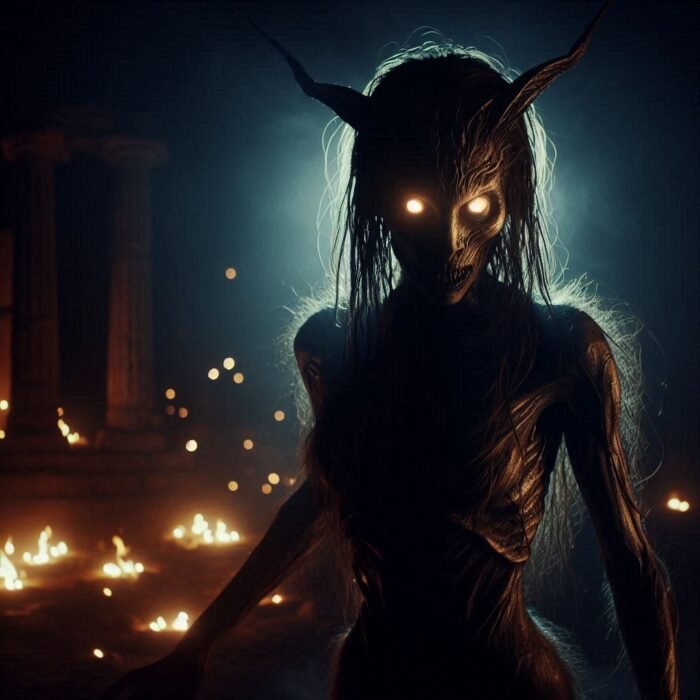In the vast and wild tapestry of Greek mythology, few figures embody chaos and destruction as fiercely as Typhon, the monstrous storm giant born of Gaia and Tartarus.
His sheer power and terrifying form—part serpentine, part human, with hundreds of dragon heads—marked him as the ultimate challenge to the gods and the order they sought to maintain.
Though Typhon himself was defeated by Zeus in a cataclysmic battle that shook the very foundations of the cosmos, his legacy did not end with his fall.
From the depths of this primal chaos came a terrifying brood of offspring, creatures as fearsome and wild as their father, each carrying a fragment of his destructive power.


Origins and Genealogy
Typhon’s origins are tangled and vary slightly depending on source, but the most authoritative comes from Hesiod’s Theogony and later epic and lyric poets:
- Parents: Gaia (Earth) and Tartarus (the primordial abyss), embodying primal Earth and the chaotic depths beneath it.
- Purpose: Born as Gaia’s final weapon against Zeus after the Titans were defeated, Typhon represents nature’s rebellion against imposed divine order.
In some variations, Typhon is linked to the primordial force Chaos itself, making him a direct embodiment of cosmic disorder.
Physical Description: Horror Incarnate
Typhon is described with overwhelming, terrifying detail:
- Size: Colossal, with shoulders brushing the stars.
- Heads: Between 100 and 200 serpent heads erupt from his shoulders or body, each breathing fire, smoke, and venom.
- Eyes: Glowing, sometimes flaming or emitting sparks.
- Wings: Massive, dragon-like wings enabling terrifying flight.
- Limbs: Human arms ending in snake coils or serpents replacing legs.
- Voice: A cacophony of terrifying sounds—howling, roaring, and hissing.
He’s a living storm, a walking apocalypse.
The Mythic Battle: Zeus vs. Typhon
The clash between Zeus and Typhon is an apocalyptic cosmic war, symbolizing the ultimate battle of order against chaos, civilization against untamed nature.
- Typhon attacks Olympus: He attempts to overthrow Zeus by physically assaulting the gods’ home, hurling mountains and spewing destructive storms.
- Zeus counters: Using thunderbolts, lightning, and wind storms, Zeus battles Typhon fiercely.
- Typhon wounds Zeus: In some versions, Typhon strips Zeus of his sinews (tendons), imprisoning him (in the Corycian Cave or another locale), which delays Zeus’s victory.
- Zeus’s recovery and victory: With Hermes’ help or by retrieving his sinews, Zeus recovers, returns, and finally defeats Typhon.
- Typhon’s imprisonment: Zeus pins Typhon beneath Mount Etna or another volcano, where his writhing causes eruptions and earthquakes.
Literary Sources and Variants
- Hesiod’s Theogony: The earliest and most influential account; it emphasizes Typhon’s birth, terrifying appearance, and defeat by Zeus.
- Apollodorus’ Library: Expands on the battle and details Typhon’s offspring with Echidna.
- Pindar and Euripides: They allude to Typhon as a cosmic threat.
- Nonnus’ Dionysiaca: A late antique epic giving elaborate descriptions of Typhon’s monstrous form and fight.
- Roman sources (Virgil, Ovid): Sometimes equate Typhon with other monsters or volcanic forces.
Typhon’s Offspring and Legacy
Typhon and his mate Echidna are parents to some of Greek mythology’s most infamous monsters:
- Cerberus: Three-headed dog guarding the underworld.
- Hydra: Multi-headed serpent.
- Chimera: Hybrid fire-breathing monster.
- Sphinx: Riddle-posing hybrid creature.
- Nemean Lion: Invulnerable beast.
This monstrous brood cements Typhon’s role as the source of chaos in the world.
Symbolism and Interpretation
Typhon is far more than a scary monster:
- Personification of Natural Disaster: Volcanoes, earthquakes, storms—all uncontrollable forces that ancient Greeks feared and sought to explain.
- Chaos vs. Order: Typhon embodies the raw chaos that Zeus (order, law, and civilization) must continually suppress.
- Cosmic Cycle: His imprisonment under volcanoes explains natural phenomena, suggesting that chaos is never fully eradicated, only contained.
- Psychological Archetype: Typhon represents the monstrous shadow within nature and humans—the destructive forces beneath the surface of civilization.
Archaeological and Cultural Echoes
Volcano Mythology: Mount Etna, Mount Vesuvius, and other volcanic sites in the Mediterranean were linked to Typhon’s imprisonment, reflecting early human attempts to rationalize natural disasters.
Cult and Rituals: While there is no direct cult worship of Typhon, his myth influenced ritual invocations against chaos and calamity.
Iconography: Some ancient art depicts Typhon as a chaotic mass of serpents and human forms, emphasizing his terrifying nature.
Comparative Mythology
Typhon has parallels in other mythologies:
- Leviathan (Hebrew tradition): A sea serpent symbolizing chaos.
- Tiamat (Babylonian myth): A primordial chaos dragon defeated by Marduk.
- Jörmungandr (Norse myth): The world serpent who encircles the earth.
These parallels highlight a common human need to personify and conquer chaos through myth.
Final Thoughts on Typhon
Typhon’s myth is a cornerstone of Greek cosmogony and theology—without him, Zeus’s rule lacks tension and significance. Typhon reminds us that beneath the fragile veneer of civilization lies a vast, wild chaos always ready to erupt. The ancient Greeks personified this fear in Typhon, weaving a story of conflict, survival, and balance that still captivates.
Monstrous Summary
This monstrous lineage was not just a parade of terrifying creatures but a reflection of the chaotic forces that ancient Greeks believed constantly threatened the fragile order of the cosmos.
Typhon’s offspring represented natural disasters, wild beasts, and the darker impulses of the world—forces that the gods had to subdue for civilization to thrive.
The stories of these creatures weave through the myths of heroes and gods, often serving as epic challenges that define the valor and cunning of mortals like Heracles and Bellerophon.
Their defeat symbolizes the triumph of order, civilization, and reason over chaos, wildness, and destruction.
Typhon’s legacy also underscores the Greek worldview that chaos is never fully destroyed but contained and balanced.
The monstrous offspring remain reminders of the primal forces lurking beneath the world’s surface—powerful, untamed, and eternally dangerous.








Comments